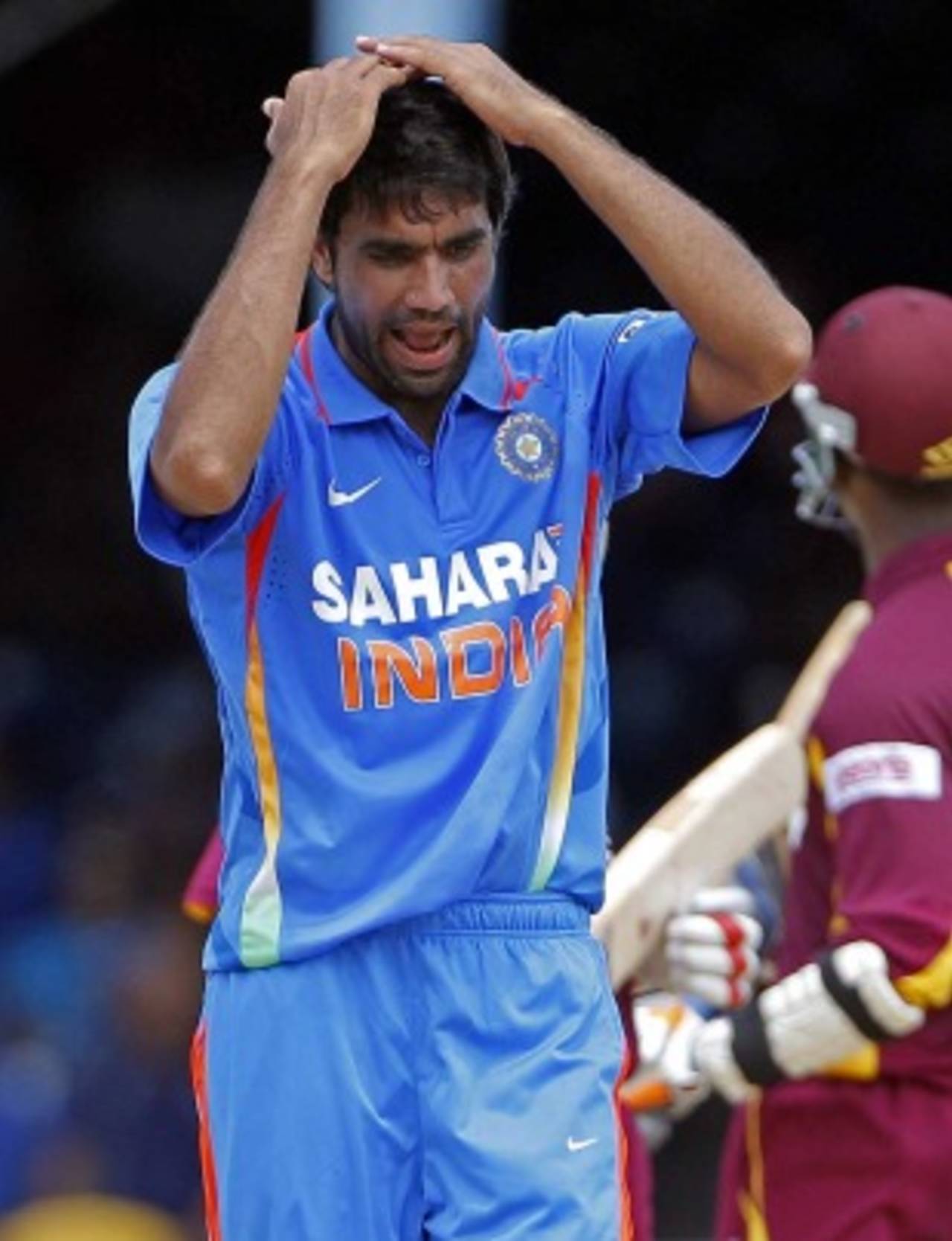Munaf, a product of Indian conditions
Slow, low playing conditions may force India's bowlers to sacrifice pace, but they also make them smarter, says Aakash Chopra
Aakash Chopra
15-Jun-2011

Dead, docile Indian pitches made Munaf Patel choose between pace and tactfulness • Associated Press
"When Munaf Patel came here in 2006, he had some pace, now he is spinning the ball!" Those words from the legendary Andy Roberts are discouraging, but not surprising. Munaf may have lost pace since his international debut, but to say that he may now just be spinning the ball is exaggeration. What concerns me though is a bigger question: what is it that coerced Munaf to denounce speed and become an understated version of the ferocious fast bowler, that too when he was touted to be India's answer to Lee and Akhtar?
I saw the first of Munaf when John Wright called him for a nets-session during an India camp in Bangalore, in 2003. At the time Munaf hadn't played first-class cricket. Yet, his considerable pace had not only prompted a call-up from the MRF Pace Foundation, where he'd impressed everyone, but had also caught the eye of one of the national selectors who in turn informed Wright about his extraordinary potential.
Munaf ran in hard and bowled with pace. Even though he lacked some direction at the time, he managed to make an impact. This fast-tracked his promotion, for India couldn't afford losing a genuinely quick bowler to the rigours of domestic cricket. He made his first-class debut for India A against New Zealand in Rajkot. Once again he bowled with pace, took a few wickets, but a lack consistency proved to his bane. Everything was happening at break-neck speed for Munaf - from bowling bare-foot on the fields of Gujarat, to rubbing shoulders with the best cricketers in the country and being hyped as the next big thing in Indian cricket.
Just when you least expected it, though, the inevitable happened. Munaf's body hadn't been prepared for such hard toil and gave in. A spate of injuries pegged him back and stalled his progress. He was sent back to domestic cricket to take a bagful of wickets and, more importantly, prove his fitness to earn a place in the national team.
He did just that and was rewarded with a Test cap in 2006. I was in Mohali when he got those crucial three wickets on Test debut against England. By this time he had earned the reputation of being India's fastest bowler and he wasn't disappointing. He continued in the same vein for a while, before something mysteriously took away his pace. He'd not only dumped what had been his novelty, but also lacked control. He was taken for runs and also picked up a couple of niggles along the way. Consequently, he was dropped from the Indian team.
The demands of playing on dead and docile pitches made him reassess his plans for the future. He could have continued to bowl fast if he wanted to, however it wasn't about pace anymore but about playing for India for a long duration. It was around this time that he started sacrificing pace for control. When the team management could have made him think otherwise - assign him the role of bowling fast, be aggressive - he was left to his own devices. If only someone could have put an arm around him and told him to persist with his skill and not succumb to pressures, Munaf would've still been a fast bowler, perhaps one of his kind.
If you expect a player to put the team's interest ahead of his own, you must instill the necessary faith in him. Unfortunately, that doesn't happen often. So, when a player has to fend for himself, you can't blame him for being a bit selfish. Instead of working overtime to bowl quick, Munaf spent more time getting his lines and lengths right. Since he doesn't swing the ball much, he worked on cutters to go along with immaculate line and length.
By the time he edged his way back into the Indian team, he had transformed into a different bowler. He was no longer the firebrand fast bowler who would make the batsmen jump, but one who maintained a tight leash with his control and array of cutters. Would you blame him for sacrificing his pace to secure his position in the national side? It would be unfair if you did.
Fast bowling is a gruelling job in slow Indian conditions. How do you keep yourself motivated when the ball bounces twice before reaching the wicketkeeper? And when regardless of how fast you bowl, the batsman always has enough time to get behind the ball, since it loses its zing the moment it touches the surface? These conditions may have taken pace away from our medium-pace bowlers, but they have definitely made them smarter.
It isn't easy to drop pace and still be effective. Can you imagine Malinga or Lee still performing their magic if they bowled in the mid-120s? But Zaheer Khan and co do it with ease time and again, and in most conditions. If we want the likes of Ishant Sharma and Umesh Yadav (people who can still clock 140 kph+) to not go the Munaf way, we must do enough to nurture these assets. Andy Roberts may have observed a thing or two about Munaf, but his comments reflect the stories of many Indian fast bowlers.
Former India opener Aakash Chopra is the author of Beyond the Blues, an account of the 2007-08 Ranji Trophy season. His website is here and his Twitter feed here